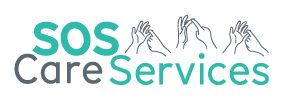Spinal Cord Injury defined
A spinal cord injury — damage to any part of the spinal cord or nerves at the end of the spinal canal (cauda equina) — often causes permanent changes in strength, sensation and other body functions below the site of the injury.
The lowest part of the spinal cord that remains undamaged after an injury is referred to as the neurological level of injury. The severity of the injury is often called “the completeness” and is classified as either of the following:
- Complete – If all feeling (sensory) and all ability to control movement (motor function) are lost below the spinal cord injury, the injury is called complete.
- Incomplete – If there is some motor or sensory function below the affected area, the injury is called incomplete. There are varying degrees of incomplete injury.
(Information from: Mayo Clinic)
Paralysis
Additionally, paralysis from a spinal cord injury can be referred to as:
- Tetraplegia – Also known as quadriplegia, means that the arms, hands, trunk, legs and pelvic organs are all affected by the spinal cord injury.
- Paraplegia – This paralysis affects all or part of the trunk, legs and pelvic organs.
(Information from: Mayo Clinic)
What research is being done on Spinal Cord Injuries?
Current research that is being conducted regarding Spinal Cord Injuries has began to advance our understanding on four key principles of Spinal Cord repair. The four principles are highlighted below:
- Neuroprotection – aiming to prevent cell death and protect the surviving nerve cells from any further damage.
- Repair and Regeneration – encouraging the Spinal Cord to self-repair where possible, and stimulate the regrowth of nerve cell projections.
- Cell-based Therapies – the replacement of damaged nerves or support cells with other cell types, including stem cells, to regenerate neuronal growth and create new cell connections.
- Retraining Central Nervous System circuits – restoring body functions and encouraging new nerve connections and pathways to form through techniques that include rehabilitation, electrical stimulation, robot-assisted training, and brain-computer interface technology that may help with voluntary muscle movement and coordination.
(Information from: National Institute of Neurological Disorders and Stroke)

